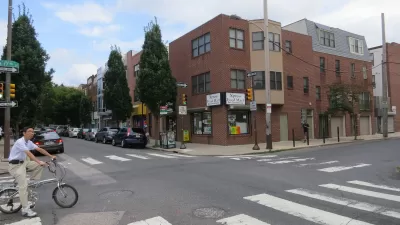Recently approved laws that force cities to take a more proactive approach to the state-mandated Regional Housing Needs Assessment process are beginning to take effect in California.

A detailed article by Benjamin Schneider digs into the changes occurring in California's Regional Housing Needs Assessment (RHNA) process as a result of Senate Bill 828, authored by State Senator Scott Wiener and approved by the California State Legislature in 2018—as part of a package of "housing first" bills that included the more closely monitored, but eventually failed, Senate Bill 827.
"The law beefs up the methodology used to determine each region’s housing allocation, accounting for previous under-production of housing, as well as areas where home prices are rising faster than wages, among other considerations," according to Schneider's explanation.
As a result, the Association of Bay Area Governments (ABAG), working with planners from the Metropolitan Transportation Commission (MTC), must now plan for a doubling of allocated housing for this cycle of the RHNA process.
"Of the Bay Area’s allocation, 26 percent of new homes must be for very low income households, 15 percent for low income, 17 percent for moderate income, and 42 percent for above moderate income," explains Schneider of the allocation announced in June 2020.
ABAG adopted their plan for addressing that allocation on January 21, 2021, reports Schneider, but official certification awaits state approval and likely litigation from the cities responsible for the local plans and zoning changes that will work toward accomplishing the prescribed changes. San Francisco, for example, "needs to plan for a 22 percent increase in households, or 82 thousand more units, between 2023 and 2031. That’s up from an allocation of about 29 thousand homes during the 2014-22 cycle," writes Schneider.
Illustrations of how the housing allocation breaks down around the Bay Area, provided by the MTC, are included in the article, in addition to a lot more details on the plan approved by ABAG earlier this month.
The RHNA methodology has been a source significant political controversy in the state in recent months. A study by the Embarcadero Institute tried to poke holes in the methodology earlier this year. An article recently shared by Planetizen showed how some wealthy cities, Newport Beach in Orange County in this example, but Beverly Hills and Pasadena offer other famous examples, have managed to avoid large allocations through the RHNA process in the past.
FULL STORY: Bay Area Takes Step Toward Major Housing Growth

Planetizen Federal Action Tracker
A weekly monitor of how Trump’s orders and actions are impacting planners and planning in America.

Maui's Vacation Rental Debate Turns Ugly
Verbal attacks, misinformation campaigns and fistfights plague a high-stakes debate to convert thousands of vacation rentals into long-term housing.

San Francisco Suspends Traffic Calming Amidst Record Deaths
Citing “a challenging fiscal landscape,” the city will cease the program on the heels of 42 traffic deaths, including 24 pedestrians.

Defunct Pittsburgh Power Plant to Become Residential Tower
A decommissioned steam heat plant will be redeveloped into almost 100 affordable housing units.

Trump Prompts Restructuring of Transportation Research Board in “Unprecedented Overreach”
The TRB has eliminated more than half of its committees including those focused on climate, equity, and cities.

Amtrak Rolls Out New Orleans to Alabama “Mardi Gras” Train
The new service will operate morning and evening departures between Mobile and New Orleans.
Urban Design for Planners 1: Software Tools
This six-course series explores essential urban design concepts using open source software and equips planners with the tools they need to participate fully in the urban design process.
Planning for Universal Design
Learn the tools for implementing Universal Design in planning regulations.
Heyer Gruel & Associates PA
JM Goldson LLC
Custer County Colorado
City of Camden Redevelopment Agency
City of Astoria
Transportation Research & Education Center (TREC) at Portland State University
Jefferson Parish Government
Camden Redevelopment Agency
City of Claremont





























